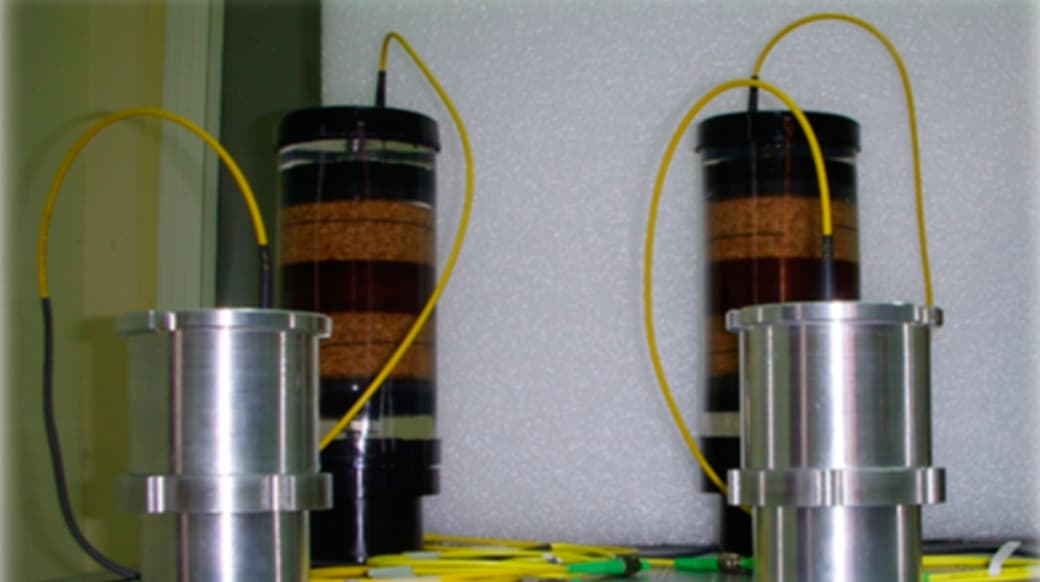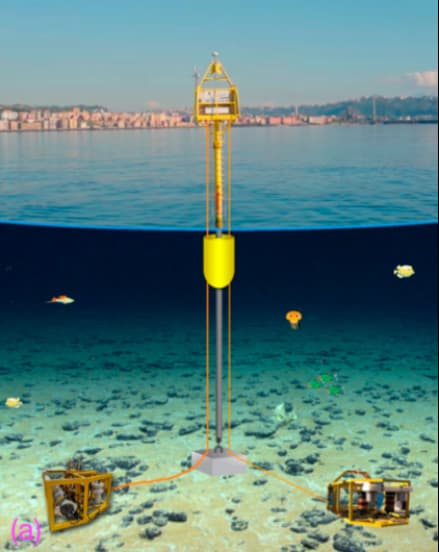Optical fiber hydrophone system is a complex sensing system, which mainly uses optical fiber sensing technology to realize the conversion, transmission and processing of underwater sound signals. As the core part of the system, the implementation process are crucial to the performance of the whole system.
The components of optical fiber hydrophone mainly include wet end and dry end. The wet end, as the sensing end, consists of the optical fiber hydrophone sensor probe and the transmission optical cable used to transmit the optical signal. The sensor probe is the core component of fiber-optic hydrophones, which can receive underwater sound signals and convert them into optical signals.
The dry end mainly includes the light source of optical fiber hydrophone, optical passive device, photoelectric conversion module and signal demodulation processing module. The light source is responsible for providing stable optical signals. The optical passive device is used to control the transmission and modulation of the optical signal. The photoelectric conversion module converts the received optical signal into an electrical signal, and the signal demodulation processing module demodulates and processes the electrical signals to extract useful sound information.
![]()
Main components of the fiber-optic hydrophone:
a) sensor prob:
Optical fiber: a core element in the sensor probe that transforms acoustic signals into optical signals. The materials, diameter, length and other parameters of the optical fiber are carefully designed to optimize its sensing performance.
Sensing diaphragm: usually located at the end of the fiber and is very sensitive to underwater sound pressure signals. When the sound wave acts on the diaphragm, it will produce deformation, and then cause the change of the phase, intensity and other parameters of the light in the optical fiber.
Seal construction: Ensure that the sensor resists water shock and corrosion under water while keeping the interior dry and stable.
b) illuminant:
Laser: produce stable, high quality beam for propagation in fiber. The type of laser and the choice of output power directly affect the sensitivity and dynamic range of the fiber hydrophone.
Drive circuit: Provide a stable current and voltage for the laser to ensure its stable operation for a long time.
C) Optical passive devices:
Coupler: it is used to effectively couple the light generated by the light source to the optical fiber, while realizing the distribution and combination of optical signals.
Wave division multiplexer: used to transmit multiple wavelengths in a single fiber to improve the transmission capacity of the fiber.
Filter: used to filter noise and stray light and improve signal to noise ratio.
And d) the photoelectric conversion module:
Photodetector: to convert the received optical signal into electrical signals. The response speed and sensitivity of photodetectors directly affect the performance of the system.
Preamplifier: to amplify the weak electrical signal output by the photodetector to facilitate subsequent signal processing.
E) Signal demodulation processing module:
Demodulation circuit: according to the specific demodulation algorithm, the signal output by the photoelectric conversion module is demodulated to restore the original sound signal.
Data acquisition and processing unit: digitize, store and analyze the demodulated signal to extract useful sound information.
Fiber-optic hydrophones may also include some auxiliary components, such as temperature sensors, pressure sensors, etc., which are used to monitor and compensate for the impact of environmental conditions on system performance. The design and manufacture of these components requires a high degree of precision and reliability to ensure that fiber optic hydrophones work stably and long term in harsh underwater environments. At the same time, with the continuous development of optical fiber sensing technology, the performance of these components is also constantly improving, providing strong technical support for optical fiber hydrophones in a wider range of application fields.

In the preparation process, optical fiber and metal filament and other components are accurately processed and assembled according to the specific process requirements to form optical fiber hydrophones with specific structure and performance. The installation process of fiber-optic hydrophones is a relatively complex and requires a highly specialized operation. Fiber-optic hydrophones need to be deployed in suitable locations underwater according to specific application scenarios and requirements to ensure that they can effectively receive and process sound signals.

Some key issues also need to be considered in practical application, such as the stability, sensitivity and anti-interference ability of the system. In order to improve the performance of the system, some advanced technical means can be adopted, such as optimizing the structure design of the optical fiber hydrophone, improving the stability and output power of the light source, and improving the signal demodulation algorithm.
Fiber-optic hydrophones have excellent stability. The optical fiber materials used have extremely high intrinsic safety and reliability. This characteristic makes the fiber optic hydrophone to maintain stable performance for a long time and is not easy to fail. In addition, the fiber optic hydrophone also has good system stability and can maintain normal operation in a variety of harsh environments.
The sensitivity of the fiber-optic hydrophones is extremely high. Its sensor probe is very sensitive to underwater sound pressure signals, and even small sound changes can be accurately captured and converted into light signals. This high sensitivity allows fiber optic hydrolisteners to capture weak sound signals in the underwater environment, enabling accurate detection and identification of underwater targets. At the same time, the fiber optic hydrophone also has the characteristics of good array sensitivity consistency, to ensure the accuracy and consistency of each channel signal.
Fiber-optic hydrophone has a powerful anti-interference capability. Because its signal sensing and transmission are both light as the carrier, the electromagnetic interference below a few hundred MHz has very little effect on it. This means that fiber optic hydrophones can work properly in complex underwater environments without being affected by electromagnetic interference. In addition, the fiber optic hydrophone also has the characteristics of corrosion resistance, high temperature resistance, and can maintain stable performance in a variety of harsh environments.
In general, the fiber optic hydrophone system is a highly integrated and intelligent system, and the composition and implementation process of its components are of great significance for achieving efficient and accurate underwater sound signal detection and processing. With the continuous development and progress of optical fiber sensing technology, the application prospect of fiber optic hydrophone system in ocean exploration and underwater communication will be broader.